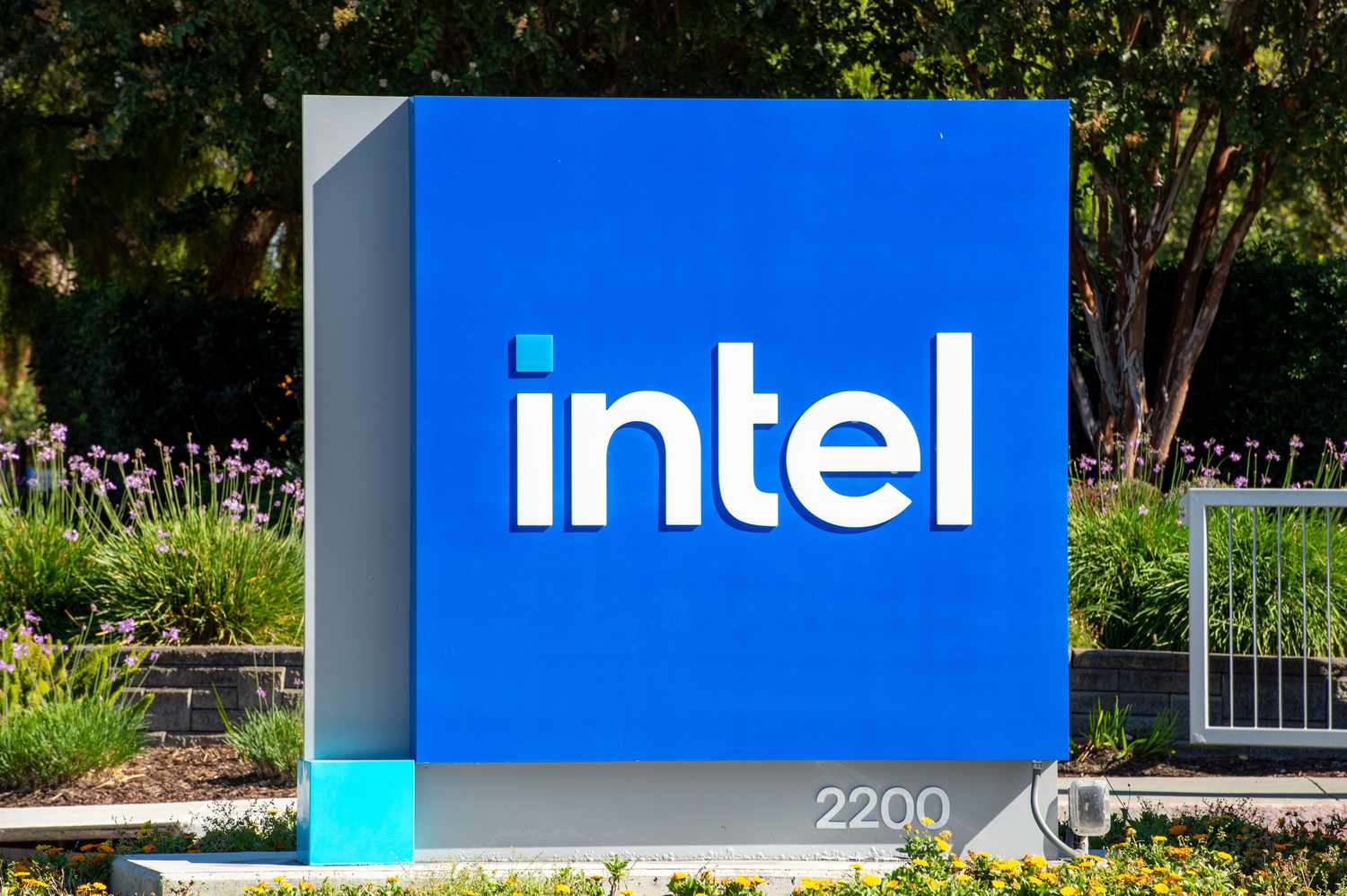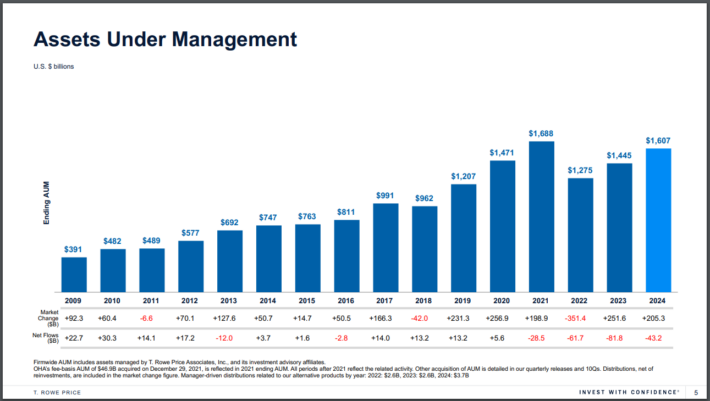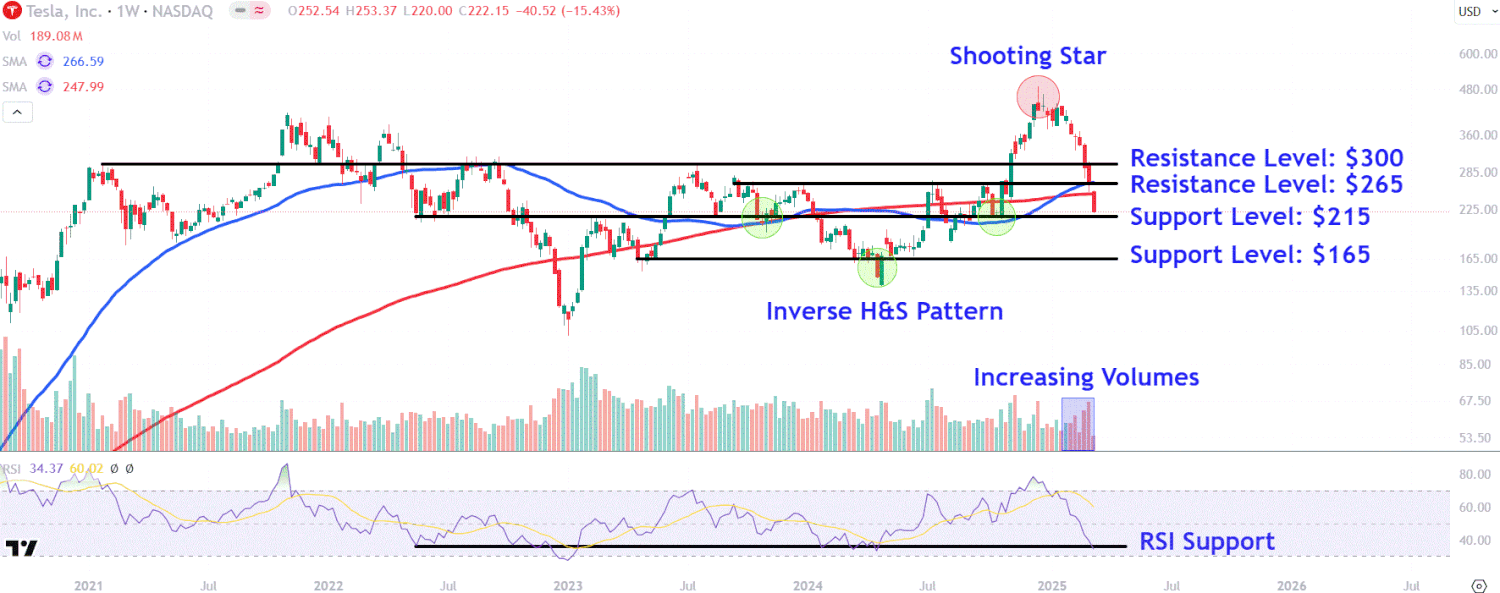Published on March 11th, 2025 by Bob Ciura
Blue-chip stocks are established, financially strong, and consistently profitable publicly traded companies.
Their strength makes them appealing investments for comparatively safe, reliable dividends and capital appreciation versus less established stocks.
This research report has the following resources to help you invest in blue chip stocks:
Resource #1: The Blue Chip Stocks Spreadsheet List
There are currently more than 500 securities in our blue chip stocks list.
We categorize blue chip stocks as companies that are members of 1 or more of the following 3 lists:
Simply put, blue chip stocks have at least 10 consecutive years of dividend increases.
At the same time, we often recommend income investors consider high dividend stocks, for their elevated dividend yields.
High dividend stocks means more income for every dollar invested. All other things equal, the higher the dividend yield, the better.
The combination of dividend yield and growth, can result in outstanding long-term returns.
In this research report, we analyze 10 blue chip stocks with high dividend yields of 5.0% and greater.
The list is sorted by dividend yield, in ascending order.
Table of Contents
The table of contents below allows for easy navigation.
High Yield Blue Chip #10: Franklin Resources (BEN)
- Dividend History: 45 years of consecutive increases
- Dividend Yield: 6.2%
Franklin Resources is an investment management company. It was founded in 1947. Today, Franklin Resources manages the Franklin and Templeton families of mutual funds.
On January 31st, 2025, Franklin Resources reported net income of $163.6 million, or $0.29 per diluted share, for the first fiscal quarter ending December 31, 2024.
This marked a significant improvement from the previous quarter’s net loss of $84.7 million, though EPS remained lower than the $251.3 million net income recorded in the same quarter last year.


Source: Investor presentation
The past few years have been difficult for Franklin Resources. Franklin Resources was slow to adapt to the changing environment in the asset management industry.
The explosive growth in exchange-traded funds and indexing investing surprised traditional mutual funds.
ETFs have become very popular with investors due in large part to their lower fees than traditional mutual funds. In response, the asset management industry has had to cut fees and commissions or risk losing client assets.
Earnings-per-share are expected to decline in 2025 as a result. The company still maintains a manageable payout ratio of 51% expected for 2025, but if EPS continues to decline, the dividend payout could be in danger down the road.
Click here to download our most recent Sure Analysis report on BEN (preview of page 1 of 3 shown below):


High Yield Blue Chip #9: Enterprise Products Partners LP (EPD)
- Dividend History: 27 years of consecutive increases
- Dividend Yield: 6.4%
Enterprise Products Partners was founded in 1968. It is structured as a Master Limited Partnership, or MLP, and operates as an oil and gas storage and transportation company.
Enterprise Products has a large asset base which consists of nearly 50,000 miles of natural gas, natural gas liquids, crude oil, and refined products pipelines.
It also has storage capacity of more than 250 million barrels. These assets collect fees based on volumes of materials transported and stored.


Source: Investor Presentation
Enterprise Products Partners reported strong fourth-quarter 2024 earnings, delivering $1.6 billion in net income, or $0.74 per common unit, representing a 3% increase over the prior year.
Adjusted cash flow from operations rose 4% to $2.3 billion, with the company declaring a quarterly distribution of $0.535 per unit, a 4% year-over-year increase.
Enterprise also continued its capital return strategy, repurchasing 2.1 million common units during the quarter and 7.6 million units for the full year, bringing total buybacks under its program to $1.1 billion.
For the full year, the company posted $9.9 billion in EBITDA, moving 12.9 million barrels of oil equivalent per day.
Click here to download our most recent Sure Analysis report on EPD (preview of page 1 of 3 shown below):


High Yield Blue Chip #8: Pfizer Inc. (PFE)
- Dividend History: 16 years of consecutive increases
- Dividend Yield: 6.5%
Pfizer Inc. is a global pharmaceutical company focusing on prescription drugs and vaccines. Pfizer’s top products are Eliquis, Prevnar family, Paxlovid, Comirnaty, Vyndaqel family, Ibrance, and Xtandi. Pfizer had revenue of $63.6B in 2024.
Pfizer reported solid Q4 2024 results on February 4th, 2025. Company-wide revenue grew 21% operationally and adjusted diluted earnings per share climbed to $0.63 versus $0.10 on a year-over-year basis because of stabilizing COVID-19 related sales, growing revenue from the existing portfolio, and lower expenses.
Global Biopharmaceuticals sales gained 22% to $17,413M from $14,186M led by gains in Primary Care (+27%), Specialty Care (+12%), and Oncology (+27%). Pfizer Centerone saw 11% lower sales to $325M, while Ignite revenue was $26M.
Of the top selling drugs, sales increased for Eliquis (+14%), Prevnar (-4%), Plaxlovid (flat), Cominraty (-37%), Vyndaqel/ Vyndamax (+61%), Ibrance (-2%), and Xtandi (+24).
Click here to download our most recent Sure Analysis report on PFE (preview of page 1 of 3 shown below):


High Yield Blue Chip #7: Northwest Bancshares Inc. (NWBI)
- Dividend History: 13 years of consecutive increases
- Dividend Yield: 6.7%
Northwest Bancshares is a bank holding company that offers full-service financial institutions providing a complete line of personal and business banking products, including employee benefits, investment management services, and trust.
Northwest Bank is the leading subsidiary of Northwest Bancshares, and it operates 162 branches in central and western Pennsylvania, western New York, eastern Ohio, and Indiana. Northwest Bancshares has been paying a rising dividend for thirteen consecutive years.
On January 24th, 2025, the company announced the fourth quarter results for the fiscal year (FY)2024. The company reported fourth-quarter 2024 net income of $33 million, or $0.26 per diluted share, reflecting a $4 million increase from the same period in 2023 but a slight decline from the previous quarter.
Adjusted net income (non-GAAP) was $35 million, or $0.27 per diluted share. The company’s net interest margin expanded by 9 basis points to 3.42%, bolstered by an interest recovery. Additionally, the efficiency ratio improved to 61.8%.
Click here to download our most recent Sure Analysis report on NWBI (preview of page 1 of 3 shown below):


High Yield Blue Chip #6: Altria Group (MO)
- Dividend History: 55 years of consecutive increases
- Dividend Yield: 6.9%
Altria is a tobacco stock that sells cigarettes, chewing tobacco, cigars, e-cigarettes, and more under a variety of brands, including Marlboro, Skoal, and Copenhagen, among others.
With a current dividend yield of nearly 8%, Altria is an ideal retirement investment stock.
This is a period of transition for Altria. The decline in the U.S. smoking rate continues. In response, Altria has invested heavily in new products that appeal to changing consumer preferences, as the smoke-free category continues to grow.


Source: Investor Presentation
The company also has a 35% investment stake in e-cigarette maker JUUL, and a 45% stake in the Canadian cannabis producer Cronos Group (CRON).
Altria Group reported solid financial results for the fourth quarter and full year of 2024. For the fourth quarter, revenue of $5.1 billion beat analyst estimates by $50 million, and increased 1.6% year-over-year. Adjusted EPS of $1.29 beat by a penny.
For the full year, Altria generated adjusted diluted EPS growth of 3.4% and returned over $10.2 billion to shareholders through dividends and share repurchases.
For 2025, Altria expects adjusted diluted EPS in a range of $5.22 to $5.37. This represents an adjusted diluted EPS growth rate of 2% to 5% for 2025.
Click here to download our most recent Sure Analysis report on Altria (preview of page 1 of 3 shown below):


High Yield Blue Chip #5: LyondellBasell Industries (LYB)
- Dividend History: 13 years of consecutive increases
- Dividend Yield: 7.0%
LyondellBasell is one the largest plastics, chemicals and refining companies in the world. The company provides materials and products that help advance solutions for food safety, water purity, fuel efficiency of vehicles, and functionality in electronics and appliances.
LyondellBasell sells products in more than 100 countries and is the world’s largest producer of polymer compounds. The company, with U.S operations headquartered in Houston, Texas and global operations headquartered in London, generated $40.3 billion in sales last year.
On January 31st, 2025, LyondellBasell posted its Q4 and full year results for the period ending December 31st, 2024. The company posted revenues of $9.45 billion, marking a sequential decline from $10.32 billion in Q3, due to softer demand and lower product pricing across key divisions.
The company posted adjusted EBITDA of $689 million, down from $1.21 billion in Q3, reflecting higher raw material costs, seasonally lower polyolefin demand, and compressed refining and oxyfuels margins amid weaker gasoline crack spreads.
Adjusted net income for Q4 was $249 million ($0.75 per share), down from $617 million ($1.88) in Q3. For the year, adjusted EPS was $6.40.
Click here to download our most recent Sure Analysis report on LYB (preview of page 1 of 3 shown below):


High Yield Blue Chip #4: Universal Health Realty Income Trust (UHT)
- Dividend History: 40 years of consecutive increases
- Dividend Yield: 7.0%
Universal Health Realty Income Trust operates as a real estate investment trust (REIT), specializing in the healthcare sector. The trust owns healthcare and human service-related facilities.
Its property portfolio includes acute care hospitals, medical office buildings, rehabilitation hospitals, behavioral healthcare facilities, sub-acute care facilities and childcare centers.
Universal Health’s portfolio consists of 76 properties located in 21 states.
On February 26, 2025, Universal Health Realty Income Trust (UHT) reported its financial results for the fourth quarter of 2024. The company achieved net income of $4.7 million, or $0.34 per diluted share, marking an increase from $3.6 million, or $0.26 per diluted share, in the same period of 2023.
This improvement was driven by a net increase in income from various properties, partially offset by higher interest expenses due to increased borrowing rates and outstanding borrowings under the revolving credit agreement.
Funds from operations (FFO) for the quarter were $11.8 million, or $0.85 per diluted share, up from $11.4 million, or $0.82 per diluted share, in the prior year’s fourth quarter.
Click here to download our most recent Sure Analysis report on UHT (preview of page 1 of 3 shown below):


High Yield Blue Chip #3: MPLX LP (MPLX)
- Dividend History: 12 years of consecutive increases
- Dividend Yield: 7.3%
MPLX LP is a Master Limited Partnership that was formed by the Marathon Petroleum Corporation (MPC) in 2012. In 2019, MPLX acquired Andeavor Logistics LP.
The business operates in two segments:
- Logistics and Storage, which relates to crude oil and refined petroleum products
- Gathering and Processing, which relates to natural gas and natural gas liquids (NGLs)
In early February, MPLX reported (2/4/25) financial results for the fourth quarter of fiscal 2024. Adjusted EBITDA and distributable cash flow (DCF) per share grew 9% and 7%, respectively, primarily thanks to higher tariff rates and increased volumes of liquids and gas.
MPLX maintained a healthy consolidated debt to adjusted EBITDA ratio of 3.1x and a solid distribution coverage ratio of 1.5x.
Click here to download our most recent Sure Analysis report on MPLX (preview of page 1 of 3 shown below):


High Yield Blue Chip #2: Delek Logistics Partners LP (DKL)
- Dividend History: 10 years of consecutive increases
- Dividend Yield: 10.9%
Delek Logistics Partners, LP is a publicly traded master limited partnership (MLP) headquartered in Brentwood, Tennessee. Established in 2012 by Delek US Holdings, Inc. (NYSE: DK), Delek Logistics owns and operates a network of midstream energy infrastructure assets.
These assets include approximately 850 miles of crude oil and refined product transportation pipelines and a 700-mile crude oil gathering system, primarily located in the southeastern United States and west Texas.
The company’s operations are integral to Delek US’s refining activities, particularly supporting refineries in Tyler, Texas, and El Dorado, Arkansas.
Delek Logistics provides services such as gathering, transporting, and storing crude oil, as well as marketing, distributing, and storing refined products for both Delek US and third-party customers.
On February 25, 2025, Delek Logistics Partners (DKL) reported its financial results for the fourth quarter of 2024. The company achieved an adjusted EBITDA of approximately $107.2 million, an increase from $100.9 million in the same period of the previous year.
Distributable cash flow was $69.5 million, with a coverage ratio of approximately 1.2 times. The Gathering and Processing segment saw an adjusted EBITDA of $66 million, up from $53.3 million in Q4 2023, primarily due to higher throughput from Permian Basin assets and contributions from the H2O Midstream acquisition.
Click here to download our most recent Sure Analysis report on DKL (preview of page 1 of 3 shown below):


High Yield Blue Chip #1: Arbor Realty Trust (ABR)
- Dividend History: 11 years of consecutive increases
- Dividend Yield: 14.0%
Arbor Realty Trust is a nationwide mortgage real estate investment trust (REIT) that acts as a direct lender and operates in two reporting segments: Agency Business and Structured Business. The trust provides loan origination and servicing for multifamily, seniors housing, healthcare, and other diverse commercial real estate assets.
Arbor Realty’s specific focus is government-sponsored enterprise products, although its platform also includes commercial mortgage backed securities (CMBS), bridge and mezzanine loans, and preferred equity issuances.
On February 21, 2025, Arbor Realty Trust reported its financial performance for the fourth quarter of 2024. The company achieved distributable earnings of $0.48 per share, surpassing the quarterly dividend of $0.43 per share.
This marked the 13th consecutive quarter in which distributable earnings exceeded dividends, highlighting Arbor’s consistent profitability. The debt platform originated $1.1 billion in new loans during the quarter, bringing the total originations for the year to $4.2 billion.
Click here to download our most recent Sure Analysis report on ABR (preview of page 1 of 3 shown below):


Additional Reading
If you are interested in finding other high-yield securities, the following Sure Dividend resources may be useful:
High-Yield Individual Security Research
Other Sure Dividend Resources
Thanks for reading this article. Please send any feedback, corrections, or questions to [email protected].




































